You can find many papers and software about OCR, because it is widely used in many applications. I want to present quite simple solution for your problem, using numpy and opencv, that will do the job.
What we will do:
- Import numpy and opencv
- Load images you have provided
- Treshold them
- Make function, that will return array of digits in given image
- Compare digit from image 1 and image 2
- Make our "bank of digits" so we know how number 9 looks like
- Compare digits we found in image 3 with our "bank of digits"
Code:
import cv2
import numpy as np
treshold = 70
#Treshold every image, so "0" in image means no digit and "1" is digit
image1 = (cv2.imread("number_1.png",0) > treshold).astype(np.uint8)
image2 = (cv2.imread("number_2.png",0) > treshold).astype(np.uint8)
image3 = (cv2.imread("number_3.png",0) > treshold).astype(np.uint8)
image4 = (cv2.imread("number_4.png",0) > treshold).astype(np.uint8)
Function, that will return array of digits in given image:
def get_images_of_digits(image):
components = cv2.connectedComponentsWithStats(image, 8, cv2.CV_16U) #Separate digits
#Get position of every components
#For details how this works take a look at
#https://stackoverflow.com/questions/35854197/how-to-use-opencvs-connected-components-with-stats-in-python
position_of_digits = components[2]
number_of_digits = len(position_of_digits) - 1 #number of digits found in image
digits = [] #Array with every digit in image
for i in range(number_of_digits):
w = position_of_digits[i+1,0] #Left corner of digit
h = position_of_digits[i+1,1] #Top corner of digit
digit = image[h:h+height_of_digit,w:w+width_of_digit] #Cut this digit out of image
#Count how many white pixels there are
px_count = np.count_nonzero(digit)
#Divide every pixel by square root of count of pixels in digit.
#Why? If we make convolution with the same digit it will give us sweet "1", which means these digits are identical
digit = digit / np.sqrt(px_count)
digits.append(digit)
return digits #Return all digits
Get digits
d_1 = get_images_of_digits(image1)[0] #Digit "9" from first image
d_2 = get_images_of_digits(image2)[0] #Digit "9" from second image
d_3 = get_images_of_digits(image4)[0] #Digit "6" from last image
print(cv2.filter2D(d_1,-1,d_2).max()) #Digit "9" on image 1 and 2 match perfectly (result of convolution is 1).
#Filter2D does convolution (correlation to be precise, but they are the same for our purpose)
Put number "9" from first image and number "6" from last image into digit bank. Then go trough every number we find in image 3 and compare it with our digit bank. If score is below 0.9, it is not match.
bank_of_digits = {"9":d_1, "6":d_3}
for digit in get_images_of_digits(image3):
#print(digit)
best_restult = 0.9 #If score is above 0.9, we say it is match
#Maybe tweak this higher for separating chars "8" and "9" and "0"
matching_digit = "?" #Default char, when there is no match
for number in bank_of_digits:
score = cv2.filter2D(digit,-1,bank_of_digits[number]).max() #Returns 0-1 . 1 Means perfect match
print("Score for number " + number +" is: "+ str(np.round(score,2)) )
if score > best_restult: #If we find better match
best_restult = score #Set highest score yet
matching_digit = number #Set best match number
print("Best match: " + matching_digit)
Final result then will be "?" for first digit in image 3, because there is no number "1" in our bank, and second result will be "6" with score of 0.97.
TLDR: I made algorithm that separates digits from your images, and compares these digits. Best matches are printed.



